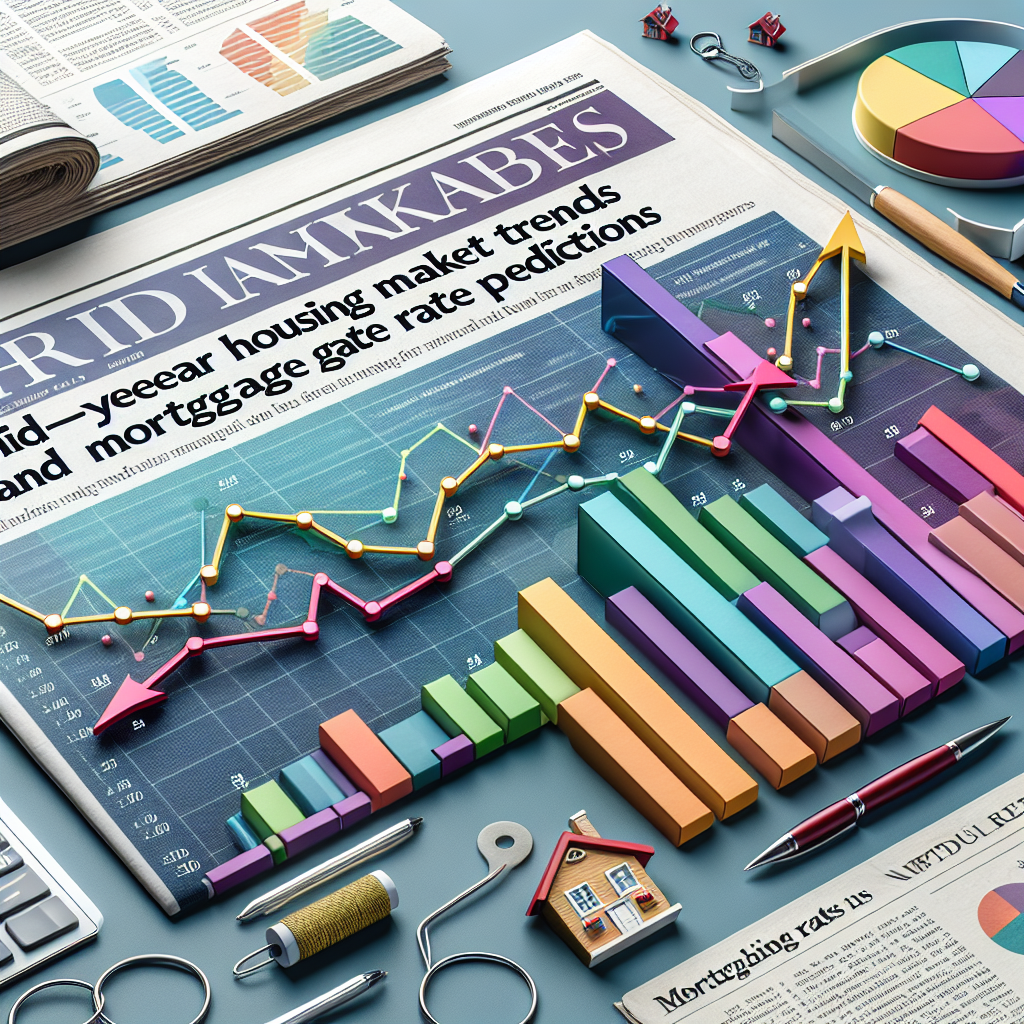-
Table of Contents
- BiggerNews: Mid-Year Housing Market Trends and Mortgage Rate Predictions
- Current Housing Market Trends
- 1. Rising Home Prices
- 2. Inventory Shortages
- 3. Increased Demand for Suburban Homes
- 4. Low Mortgage Rates
- Factors Influencing the Housing Market
- 1. Economic Conditions
- 2. Government Policies
- 3. Demographic Shifts
- 4. Technological Advancements
- Case Studies: Regional Housing Market Trends
- 1. The West Coast: California
- 2. The South: Texas
- 3. The Midwest: Ohio
- Mortgage Rate Predictions
- 1. Federal Reserve Policy
- 2. Inflation Concerns
- 3. Economic Growth
- 4. Global Economic Conditions
- Expert Opinions on Mortgage Rate Predictions
- Strategies for Homebuyers and Investors
- 1. Lock in Low Rates
- 2. Explore Suburban and Rural Areas
- 3. Invest in Growing Markets
- 4. Stay Informed
- Conclusion
BiggerNews: Mid-Year Housing Market Trends and Mortgage Rate Predictions

The housing market is a dynamic entity, influenced by a myriad of factors ranging from economic conditions to government policies. As we reach the midpoint of the year, it’s crucial to take stock of the current trends and make informed predictions about mortgage rates. This article delves into the latest housing market trends, examines the factors driving these changes, and offers insights into future mortgage rate movements.
Current Housing Market Trends
The housing market has experienced significant shifts in the first half of the year. Several key trends have emerged, shaping the landscape for buyers, sellers, and investors alike.
1. Rising Home Prices
One of the most notable trends is the continued rise in home prices. According to the National Association of Realtors (NAR), the median existing-home price for all housing types in June 2023 was $363,300, a 14.6% increase from June 2022. This surge in prices is driven by a combination of high demand and limited supply.
2. Inventory Shortages
Inventory shortages remain a significant challenge in the housing market. The NAR reports that the total housing inventory at the end of June 2023 was 1.25 million units, down 18.8% from a year ago. This shortage is exacerbated by supply chain disruptions and labor shortages in the construction industry.
3. Increased Demand for Suburban Homes
The COVID-19 pandemic has reshaped housing preferences, with many buyers seeking larger homes in suburban areas. Remote work has made it possible for people to live farther from urban centers, driving up demand for suburban properties. This trend is expected to continue as remote work becomes a permanent fixture for many companies.
4. Low Mortgage Rates
Mortgage rates have remained historically low, contributing to the strong demand for homes. As of June 2023, the average 30-year fixed mortgage rate was 3.25%, according to Freddie Mac. These low rates have made homeownership more affordable for many buyers, further fueling the housing market.
Factors Influencing the Housing Market
Several factors are influencing the current housing market trends. Understanding these factors is essential for making informed predictions about future developments.
1. Economic Conditions
The overall health of the economy plays a crucial role in the housing market. Economic indicators such as GDP growth, employment rates, and consumer confidence all impact housing demand. As the economy continues to recover from the pandemic, these indicators will shape the housing market’s trajectory.
2. Government Policies
Government policies, including tax incentives, interest rate adjustments, and housing subsidies, can significantly impact the housing market. For example, the Federal Reserve’s monetary policy decisions influence mortgage rates, while local government zoning laws affect housing supply.
3. Demographic Shifts
Demographic changes, such as population growth and aging, also affect the housing market. Millennials, now the largest generation in the workforce, are entering their prime homebuying years, driving demand for housing. Additionally, the aging population is increasing demand for senior housing and retirement communities.
4. Technological Advancements
Technological advancements are transforming the housing market. Online real estate platforms, virtual tours, and digital mortgage applications have made the homebuying process more accessible and efficient. These innovations are likely to continue shaping the market in the coming years.
Case Studies: Regional Housing Market Trends
To gain a deeper understanding of the housing market, it’s helpful to examine regional trends. Here are three case studies highlighting different regions in the United States.
1. The West Coast: California
California’s housing market has been characterized by high demand and limited supply. In cities like San Francisco and Los Angeles, home prices have soared, making affordability a significant issue. According to Zillow, the median home value in San Francisco was $1.4 million in June 2023. The state’s strict zoning laws and environmental regulations have contributed to the supply shortage.
2. The South: Texas
Texas has experienced robust population growth, driven by job opportunities and a lower cost of living. Cities like Austin and Dallas have seen significant increases in home prices. The Texas Real Estate Research Center reports that the median home price in Austin was $550,000 in June 2023, a 20% increase from the previous year. The state’s business-friendly policies and lack of state income tax continue to attract new residents.
3. The Midwest: Ohio
Ohio’s housing market has been more stable compared to the coasts. Cities like Columbus and Cleveland offer affordable housing options, attracting first-time homebuyers and investors. The Ohio Realtors Association reports that the median home price in Columbus was $250,000 in June 2023, a 10% increase from the previous year. The state’s diverse economy and lower cost of living make it an attractive option for many buyers.
Mortgage Rate Predictions
Predicting mortgage rates is a complex task, influenced by various economic and policy factors. However, by analyzing current trends and expert opinions, we can make informed predictions about future rate movements.
1. Federal Reserve Policy
The Federal Reserve’s monetary policy decisions have a significant impact on mortgage rates. In response to the economic recovery, the Fed has signaled that it may begin tapering its bond-buying program and raising interest rates. This could lead to higher mortgage rates in the coming months.
2. Inflation Concerns
Inflation is another critical factor influencing mortgage rates. As inflation rises, lenders may increase rates to maintain their profit margins. The Consumer Price Index (CPI) rose 5.4% in June 2023 compared to the previous year, the highest increase in over a decade. If inflation continues to rise, mortgage rates are likely to follow suit.
3. Economic Growth
Strong economic growth can also lead to higher mortgage rates. As the economy expands, demand for credit increases, driving up interest rates. The U.S. economy grew at an annualized rate of 6.5% in the second quarter of 2023, indicating robust growth. If this trend continues, mortgage rates may rise accordingly.
4. Global Economic Conditions
Global economic conditions can influence U.S. mortgage rates as well. For example, economic instability in other countries can lead to increased demand for U.S. Treasury bonds, driving down yields and mortgage rates. Conversely, global economic growth can lead to higher rates. Monitoring global economic trends is essential for predicting mortgage rate movements.
Expert Opinions on Mortgage Rate Predictions
To provide a well-rounded perspective, let’s consider the opinions of industry experts on future mortgage rate trends.
- Freddie Mac: Freddie Mac’s Chief Economist, Sam Khater, predicts that mortgage rates will gradually rise to around 3.5% by the end of 2023. He cites economic growth and inflation concerns as key factors driving this increase.
- Mortgage Bankers Association (MBA): The MBA forecasts that the average 30-year fixed mortgage rate will reach 3.7% by the end of 2023. They attribute this rise to the Federal Reserve’s anticipated policy changes and ongoing economic recovery.
- National Association of Realtors (NAR): The NAR expects mortgage rates to remain relatively stable, hovering around 3.4% by the end of 2023. They believe that while rates may rise slightly, they will remain historically low due to global economic uncertainties.
Strategies for Homebuyers and Investors
Given the current trends and predictions, homebuyers and investors need to adopt strategic approaches to navigate the housing market effectively.
1. Lock in Low Rates
With mortgage rates expected to rise, homebuyers should consider locking in current low rates. This can help secure more affordable monthly payments and protect against future rate increases.
2. Explore Suburban and Rural Areas
As demand for suburban and rural homes continues to grow, buyers may find more affordable options in these areas. Remote work has made it possible to live farther from urban centers, offering more space and lower costs.
3. Invest in Growing Markets
Investors should focus on markets with strong population growth and economic prospects. Cities like Austin, Texas, and Columbus, Ohio, offer promising opportunities for real estate investment due to their robust job markets and affordable housing options.
4. Stay Informed
Staying informed about market trends and economic indicators is crucial for making informed decisions. Regularly monitoring housing market reports, economic data, and expert opinions can help buyers and investors stay ahead of the curve.
Conclusion
The mid-year housing market trends reveal a dynamic landscape characterized by rising home prices, inventory shortages, and increased demand for suburban homes. Several factors, including economic conditions, government policies, and demographic shifts, are driving these trends. Regional case studies highlight the diverse nature of the housing market across the United States.
Mortgage rate predictions suggest that rates may rise in the coming months due to Federal Reserve policy changes, inflation concerns, and strong economic growth. Expert opinions provide valuable insights into future rate movements, with most predicting gradual increases.
Homebuyers and investors can navigate the market effectively by locking in low rates, exploring suburban and rural areas, investing in growing markets, and staying informed about market trends. By adopting these strategies, they can make informed decisions and capitalize on opportunities in the ever-evolving housing market.
As we move forward, staying attuned to market developments and economic indicators will be essential for success in the housing market. Whether you’re a buyer, seller, or investor, understanding the current trends and future predictions will help you make informed decisions and achieve your real estate goals.








